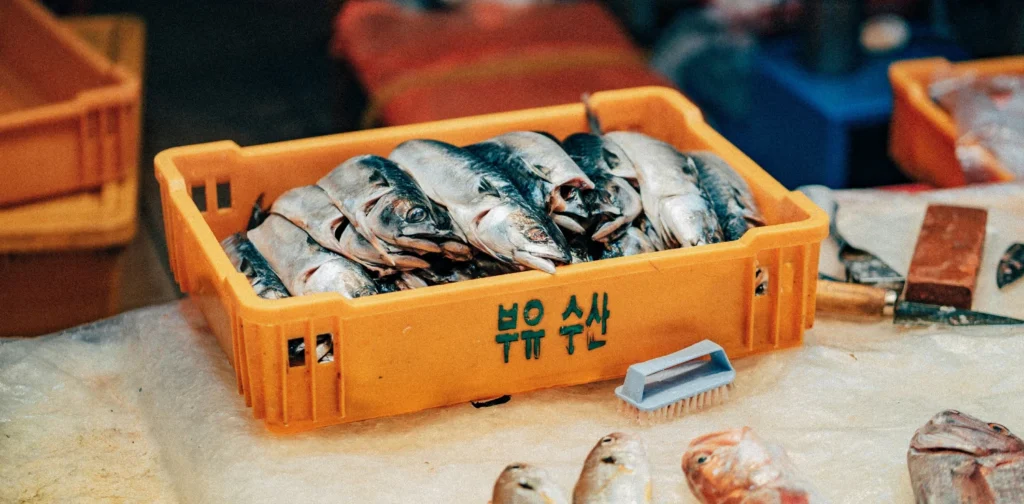Turning Seafood Waste into Opportunity for a Sustainable Blue Economy

Photo: Daniel Bernard on Unsplash.
About 70% of seafood goes to waste in processing. As the global demand for seafood continues to rise, so does the waste generated across its supply chain, from harvesting to processing. Much of this waste remains unused despite its potential value. In this light, the industry explores circular economy solutions to transform waste into resources, reduce environmental pressure, and build a more sustainable and inclusive blue economy.
The Growing Challenge of Seafood Waste
In 2020, global fish production reached 214 million tons. However, as production increases, so does seafood waste. The global seafood industry generates massive volumes of waste each year.
In India, for instance, the fishery industry produced about 576,474 tons of waste in 2015–2016, mostly from prawn processing. Similarly, in Australia, seafood manufacturing produces 50,000 to 100,000 tons of waste annually, costing around 15 million Australian dollars in disposal.
Things like fish heads, bones, skins, shellfish shells, and processing residues often end up in landfills or the ocean. These practices are responsible for heavy pollution, ocean acidification, and greenhouse gas emissions, harming people and the planet alike.
Reshaping Seafood Waste into Circular Solutions
Innovations worldwide are reshaping how seafood waste is treated. With circularity in mind, seafood waste can become food ingredients, cosmetics, biodegradable packaging, and more.
Science and technologies such as enzymatic hydrolysis, fermentation, and bioactive compound recovery are turning seafood waste into biomaterials.For example, scientists are developing biodegradable films as alternatives to petroleum-based plastics using biopolymers extracted from seafood waste, such as chitin and chitosan from shrimp shells.
Meanwhile, fish-processing by-products are transformed into biofertilizers through anaerobic digestion, composting, or aquaponics systems. Small-scale producers and coastal communities are increasingly reusing fish, shell by-products, and other forms of seafood waste into fishmeal, organic fertilizer, and animal feed.
Empowering Communities
These innovations demonstrate that circular solutions are more than about environmental benefits. They also create “new” raw materials, income sources, and opportunities for sustainable growth in the blue economy. Research on bio-circular aquaculture models shows how waste valorization can reduce environmental impact while creating economic value.
In Kenya, for example, the Kenya Marine and Fisheries Research Institute (KMFRI) extracts fish oil from the 150,000 tons of waste generated along Lake Victoria’s processing sites annually. This initiative converts waste into omega-3 supplements and animal feed, reducing pollution while providing new income opportunities.
Collaboration for Sustainable Blue Economy
Beyond science and technology, the shift toward sustainable blue economies relies on collaboration among industry actors, communities, and policymakers. From public-private investments to knowledge exchanges, resource sharing is crucial. After all, “innovation” does not have to come from modern science—it can come from local wisdom and ancient Indigenous knowledge around the world. Furthermore, supporting small-scale fishers and farmers with improved social protection would encourage widespread implementation of circular innovations.
Ultimately, the industry has many aspects to address to become sustainable, from boat fuel to fishing method to waste management. Still, there is hope and potential that the seafood industry can be a part of a circular and inclusive blue economy that benefits both marine ecosystems and coastal communities.
Editor: Nazalea Kusuma

Join Green Network Asia Membership
Amidst today’s increasingly complex global challenges, equipping yourself, team, and communities with interdisciplinary and cross-sectoral insights on sustainability-related issues and sustainable development is no longer optional — it is a strategic necessity to stay ahead and stay relevant.
Join Now

 Weaving the Thread Between the Last Elephant and the Floods in Sumatra
Weaving the Thread Between the Last Elephant and the Floods in Sumatra  Bringing Buried Rivers Back to Life Through Daylighting
Bringing Buried Rivers Back to Life Through Daylighting  Prescribing Beyond Profit for CEOs’ Anxiety
Prescribing Beyond Profit for CEOs’ Anxiety  An Interview with May Tan-Mullins, CEO and Provost of University of Reading Malaysia
An Interview with May Tan-Mullins, CEO and Provost of University of Reading Malaysia  An Interview with Eu Chin Fen, CEO of Frasers Hospitality
An Interview with Eu Chin Fen, CEO of Frasers Hospitality  The UK Government’s Funding Package Plan to Tackle Youth Unemployment
The UK Government’s Funding Package Plan to Tackle Youth Unemployment